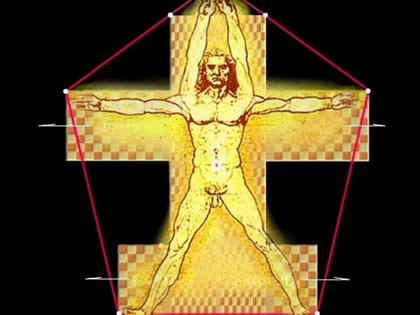|
|
Post by Goldenfleeced on Aug 17, 2014 2:54:33 GMT
Since we're going to want to find our way 'back home,' out of the 'labyrinth,' we have to figure out where we're trying to get to... and how we're going to get there... and there is a way that we can know, and do know what is going to happen, and how it all 'proves' the Truth... These messages have been passed down, from the beginning, as it were, by means of symbolic allegories known popularly as 'the Mysteries.' Mostly, people are prone to believe that these 'mysteries' pertain to things that have already happened... something in the past, that we're supposed to understand, and in a way, they do... but I believe that they are much more than that,- I believe that the 'Mysteries' point toward events of the future, that haven't yet transpired, and that is why they are still 'mysteries.' After all, if they had already happened, how mysterious can it be? I made the comment once in reply to a 'mysterious' poster on GLP (quite a long while ago now) when asked if I knew a certain 'secret,' that 'if I told you, it wouldn't be a 'secret,' would it?' No. It wouldn't. I think the same could be applied to the 'mysteries'... I want to give you the basic Wiki definition for the Greco-Roman 'Mysteries,' but I want to start us out on a 'light' note... you're going to love this... I know I did.  The term "Mystery" derives from Latin mysterium, from Greek mysterion (usually as the plural mysteria μυστήρια), in this context meaning "secret rite or doctrine". An individual who followed such a "Mystery" was a mystes, "one who has been initiated", from myein "to close, shut", a reference to secrecy (closure of "the eyes and mouth")[4]:56 or that only initiates were allowed to observe and participate in rituals. The Mysteries were thus schools in which all religious functions were closed to the uninitiated and for which the inner workings of the school were kept secret from the general public. The term "Mystery" derives from Latin mysterium, from Greek mysterion (usually as the plural mysteria μυστήρια), in this context meaning "secret rite or doctrine". An individual who followed such a "Mystery" was a mystes, "one who has been initiated", from myein "to close, shut", a reference to secrecy (closure of "the eyes and mouth")[4]:56 or that only initiates were allowed to observe and participate in rituals. The Mysteries were thus schools in which all religious functions were closed to the uninitiated and for which the inner workings of the school were kept secret from the general public. Mysterion... lolol... And, just for 'fun'...   Ummmm... hermetic 'finger magic?' Lolol... |
|
|
|
Post by Goldenfleeced on Aug 17, 2014 3:09:26 GMT
Now, let's take a further look at this particular 'mystery'... The most famous mysteries of Greco-Roman antiquity were the Eleusinian Mysteries, which were of considerable antiquity and predated the Greek Dark Ages. The popularity of mystery schools flourished on Late Antiquity; Julian the Apostate in the mid 4th century is known to have been initiated into three distinct mystery schools — most notably the Mithraic Mysteries. Due to the secret nature of the school, and because the mystery religions of Late Antiquity were persecuted by the Christian Roman Empire from the 4th century, the details of these religious practices are derived from descriptions, imagery and cross-cultural studies. "Because of this element of secrecy, we are ill-informed as to the beliefs and practices of the various mystery faiths. We know that they had a general likeness to one another".
Justin Martyr in the 2nd century explicitly noted and identified them as "demonic imitations" of the true faith, and that "the devils, in imitation of what was said by Moses, asserted that Proserpine was the daughter of Jupiter, and instigated the people to set up an image of her under the name of Kore" (First Apology). Through the 1st to 4th century, Christianity stood in direct competition for adherents with the mystery schools, insofar as the "mystery schools too [were] an intrinsic element of the non-Jewish horizon of the reception of the Christian message".
Kore... sounds a lot like Korah, if you ask me... Doing 'time' underground... Hmmmm... we should probably go ask Alice...   |
|
|
|
Post by Lakeofmarch on Aug 26, 2014 5:13:58 GMT
Reminds me of Terence McKenna's discussion on the Eleusynian mysteries, and how they may actually had to do with altered states of consciousness, precisely like the Alice story. The point of any such mystery is a communication straight to the origin of all porality, where creation comes straight from language, to direct contemplation of the Logos of the world. It seems the Mysteries happened in September, just coming up, and the specifics of it have been covered in the tunnels of the Matrix movies, down to the names of the ships, which include Osiris, Nebuchadnezzar, and Logos. There is a sense of an 'arrow' of awareness, cutting to the center of the illusion, which would exactly match the Diana aspect of what's going on.
|
|
|
|
Post by Goldenfleeced on Aug 27, 2014 6:25:03 GMT
I think that this would be a Great place to jump back into the subject of our 'Mysteries,' since we have just witnessed our 'Christ-mas Mystery Play' once again, even if we weren't exactly sure what we were looking at...  As I've tried to point out, there were originally 'Mystery Plays' put on at Christ-mas time, which, for the recently formed 'Christian' church, involved a "Paradise Tree" that was hung with 'apples.' Now, this is an interesting bit of information, because the Christian church still sponsors its 'Christmas plays,' but they don't have anything to do with an apple tree (although, the Song of Solomon does)... it has to do with the birth of a Messiah, in a manger, which is another kind of 'mystery,' but not the one that the 'church' was concerned with, necessarily. Your whole 'Christ-mas' season is a 'substitute,' let's say, of one 'mystery' for another, except that... this one takes away your 'goodies.' And... it further serves the purpose of diverting your gaze from the real 'Mystery of God' which is going on, right before your eyes... The first thing to do is to remember where your 'Christmas symbols' came from, and why... and that is why I showed you the old German Christmas cards,- the tree, and its various 'decorations' are German in origin... and the decorated tree then spread to the various other European nobility, who understood the symbolism, and then the tree spread to Britain and their royalty, who cared to imitate the European symbolism, and then to the wealthy American families, who cared to imitate the others, and from there, the tree became popular generally... it's easy to see why. I don't think that there is anyone, anywhere who can stand in the darkness and gaze quietly on a softly lit tree without being moved... somehow... There's just something about it that speaks of... Hope... and peace. It speaks of a Birth... of something Wonderful... The Germans, particularly, of that period were moved to remember this Birth with their particular symbolism for particular reasons... and it all tells a story. And that story is far from over,- which is why they 'revived' the story using the symbolism of the evergreen tree, and the star, and the 'sweets' (butter and honey, remember?), and the 'dolls' (look at the tree-topper on the card below... it is a crowned woman, you see?), and do you see that the 'Santa Claus' or 'Saint Nick' in the first card is a small 'crowned woman' wearing a golden skirt that looks ever so much like an eggshell, and her 'pass' here is the six-pointed Star... Let's look at those again, and then, this might be a good time to explain the rest of the 'Grinch' story... because that's important, too... If you haven't figured that one out yet... and maybe you have... Titled, "Princess Mary"...   And our 'grinch'...? Say 'hello' to our 'devil,' known to the Germans as Krampus, and associated (somehow) with this Holy-day season... 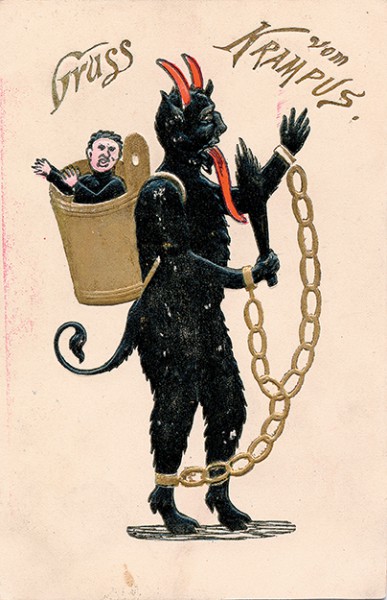 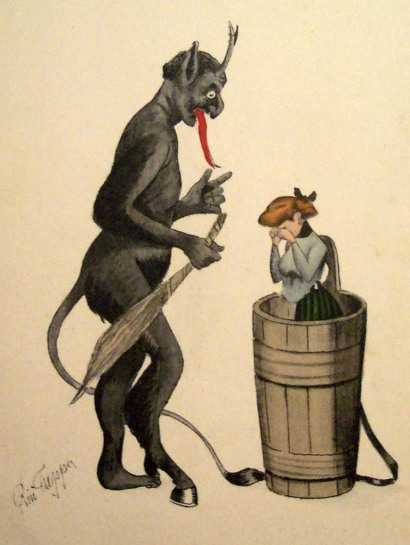  As opposed to... Father Christmas...    |
|
|
|
Post by Goldenfleeced on Dec 30, 2014 8:35:02 GMT
All right, let me just say first (although this is the wrong place for it, this is where we are right now), in reply to the remark about being 'too picky'...
You have a right to be 'picky'... about whatever it is... you do. You have every right to set certain 'standards' for your self, and you have a right to operate according to those 'personal standards;' I have some of my own. To have 'standards' is not to be 'picky,' really, but I suppose that there are certain conditions which might exist within an otherwise acceptable situation, that would tend to make it 'unacceptable,' and if those conditions might be 'corrected for' with some amount of exertion, or effort, required, but one is unwilling to make the effort required to 'perfect' or 'finish' something, then one might see that as being 'picky.' You want everything to be 'perfect' as it is, with no further effort required... which is actually just kind of 'lazy.'
You weren't handed tools for no good reason... you kind of were expected to work...
At something.
And, let's face it, a 'labor of love' is as good a thing to work at as anything, if you ask me... since any real 'treasure' here would only be confiscated by the government, I'm sure... as it is...
Anyway, I suppose I should get back to the task at hand, which is... getting back to the beginning...
|
|
|
|
Post by Goldenfleeced on Dec 30, 2014 9:00:35 GMT
Now, as I've already tried to point out, the 'Mysteries,' so-called, are not merely old stories that only relate to events that have already transpired... much of the 'mystery' that is being related is yet to happen, and that is why they are still 'mysteries.' That, and the fact that the fabricators of the 'Matrix,' so-called, that you all 'sense' exists, but can't quite put your finger on, have no interest whatsoever in your 'initiation' into Higher Truth that has to do with your/their future, since 'they' have done their 'level best' to keep you as far from it as possible... And, of course, some of these 'mysteries' were 'reserved' for only the few... indeed, "many are called, but few are chosen," when it comes to real understanding, and when it comes to the 'Higher Mysteries,' it really is the 'chosen few' that are 'initiated;' as a matter of fact, these 'mysteries' were divided into two sorts, the 'lower mysteries' and the 'higher mysteries,' and of these 'higher mysteries,' it is said that not even the priests were given the knowledge of them, but only Pharoah... and there is a reason for that, which will become apparent, shortly... for now, let me remind you that the two meanings given for 'Pharoah' or 'Phe-roe' are 'Long Hair,' and 'Great House.' And that is interesting, because... it is written that... In my Father's House are many mansions...Indeed.  And so... to speak of these things 'with understanding,' at least, in this place, at this time, requires some thought on my part, but... part of the 'mystery' is the solving... eventually... and I think that, because the knowledge was reserved for the 'heirs' only, in a very real way, actually, that the possession of this knowledge might also be an indication of just who the real 'heirs' might be... Maybe. Seven letters... and long hair. Very long hair, coincidentally...  Oh, look who dropped in... Meet 'Son of Shmilsson'... lolol... |
|
|
|
Post by Goldenfleeced on Dec 31, 2014 4:40:50 GMT
I'm going to miss that '988' post number... reminds me of another 'classic car'... the Delta 88, I believe...  At any rate, Lakeofmarch mentions the Eleusynian Mysteries, which many of you are at least passingly familiar with, by name, at least... but I think that under the circumstances, I would prefer to start you all on more 'familiar' turf, so to speak... and begin with your own 'Christ-ian Mysteries.' That way, I can't be accused of paganism, at least... or heresy, if you mean to be 'true' to your own 'traditions.' My own guess is that you have no idea what your own 'traditions' are... which helps with the maintenance of the 'Matrix,' of course,- how do you know it's not real if you have no idea what real is? You have taken everything at its 'face value,' or, in other words, you have taken someone else's word for your 'gospel,' without having bothered to 'test' this 'gold' in the laboratory. And, while (under the circumstances) you really will deserve what you get (reap as you sow), since you made no real effort to 'turn a spade,' so to speak, in order to turn over the 'real truth,' it has become somewhat a priority for me (at this time) to do my own 'level best' to uncover that which was buried, and thereby disabuse my own self, at least, of the Matrix/Labyrinth within which they would consume us... Body and soul... Like a big, nasty spider, weaving its 'web'... lurking in that 'cave of enlightenment'...  Hay... Now, I get the 'classic' rendition of "Don't Ask Me No Questions, and I Won't Tell You No Lies"... I'm sorry; I am kind of a 'pesky kid' like that... I keep asking 'why?' And sometimes, I get answers...  ' |
|
|
|
Post by Goldenfleeced on Dec 31, 2014 4:57:17 GMT
Fortuitously, I have tomorrow night 'off,' and I've been saving (coincidentally) a bottle of 'Pink Bubbles' (sparkling wine) for a 'champagne supernova'-type event, but I suppose that the birth of this New Year will do as well as any reason to 'pop that cork'... I hope that you can join me for at least a short 'toast' to the future, and 'best wishes' on our journey into the Future... I must say, it's been a hell of a trip so far...  "Flirtin' With Disaster"... Lololol... How about my ankles in hightop sneakers...? Huh...? Huh? Pretty sweet...  |
|
|
|
Post by Goldenfleeced on Jan 2, 2015 4:14:14 GMT
I've been trying to decide how to open this part of our discussion; I've decided that I will just 'jump in' with both feet... and ask how many of you reading here would consider yourselves to be 'Christian' by religious affiliation, either 'Catholic' or 'Protestant'... And then, I would ask just how many of you, 'schooled' in the 'Christian' churches, were ever given this little piece of your 'Christian history?' And, if not... why? The Gnostic Mysteries were acquainted with the arcane meaning of Serapis, and through the medium of Gnosticism this god became inextricably associated with early Christianity. In fact, the Emperor Hadrian, while traveling in Egypt in AD 24, declared in a letter to Servianus that the worshipers of Serapis were Christians and that the Bishops of the Church also worshiped at his shrine. He even declared that the Patriarch himself, when in Egypt, was forced to adore Serapis as well as Christ. (See Parsons' New Light on the Great Pyramid.)
The little-suspected importance of Serapis as a prototype of Christ can be best appreciated after a consideration of the following extract from C.W. King's Gnostics and Their Remains: "There can be no doubt that the head of Serapis, marked as the face is by a grave and pensive majesty, supplied the first idea for the conventional portraits of the Savior. The Jewish prejudices of the first converts were so powerful that we may be sure no attempt was made to depict his countenance until some generations after all that had beheld it had passed away."
...His power continued until the fourth century of the Christian Era... When the Christian soldiers, in obedience to [an] order, entered the Serapeum at Alexandria to destroy the image of Serapis which had stood there for centuries, so great was their veneration for the god that they dared not touch the image lest the ground should open at their feet and engulf them......From Manly Hall's "The Secret Teachings of All Ages" Now, that's an interesting little passage, all in all... I think you can begin to see why. And I'd just be willing to bet that you didn't know any of that... So... who is this 'Serapis?' Let's start there; I think it's as good a beginning as any...  Isis and Serapis... representing the 'Lesser' and 'Greater' Mysteries... This is also Isis and Serapis... I see two serpents... 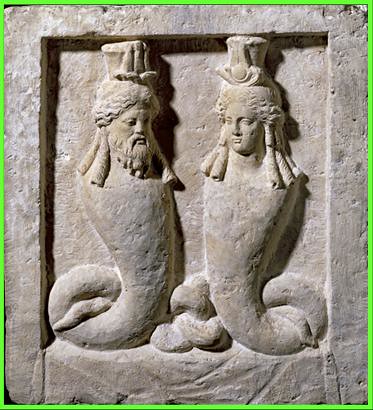 Now, that looks familiar...  Let's hang on to that '996' for a minute, and let me add this for you, from the same source... A description of the god that in all probability is reasonably accurate is that which represents him as a tall, powerful figure, conveying the twofold impression of manly strength and womanly grace. His face portrayed a deeply pensive mood, the expression inclining toward sadness. His hair was long and arranged in a somewhat feminine manner, resting in curls upon his breast and shoulders. The face, save for its heavy beard, was also decidedly feminine. The figure of Serapis was usually robed from head to foot in heavy draperies, believed by initiates to conceal the fact that his body was androgynous.Now, that sounds kind of familiar... Hmmmm.... maybe...   Courage... lol... I like it...  And, before you laugh too hard... remember this... ...but God has chosen the foolish things of the world to shame the wise, and God has chosen the weak things of the world to shame the things which are strong, and the base things of the world and the despised God has chosen,- the things that are not, so that He may nullify the things that are, so that no man may boast before God.Yep... hallelujah, right?  Let's continue briefly with post number 999, just for 'fun'... with a few additional passages relative to this figure of 'Serapis:' Various substances were used in making the statues of Serapis. Some undoubtedly were carved from stone or marble by skilled craftsmen; others may have been cast from base or precious metals. One colossus of Serapis was composed of plates of various metals fitted together. In a labyrinth sacred to Serapis, stood a thirteen-foot statue of him regarded to have been made from a single emerald. Modern writers, discussing this image, state that it was made of green glass poured in a mold. According to the Egyptians, however, it withstood all the tests of an actual emerald.
Clement of Alexandria describes a figure of Serapis compounded from the following elements: first, filings of gold, silver, lead and tin; second, all manner of Egyptian stones, including sapphires, hematites, emeralds, and topazes; all these being ground down and mixed together with the coloring matter left over from the funeral of Osiris and Apis. The result was a rare and curious figure, indigo in color. Some of the statues of Serapis must have been formed of extremely hard substances, for when a Christian soldier, carrying out the edict of Theodosius, struck the Alexandrian Serapis with his ax, that instrument was shattered into fragments and sparks flew from it. It is also quite probable that Serapis was worshiped in the form of a serpent, in common with many of the higher deities of the Egyptian and Greek pantheons.From Manly Hall's "The Secret Teachings of All Ages" I underlined the parts that interested me, specifically; I think you'll see why. We have a Labyrinth, a number 13, an Emerald (which may have been 'poured' in some sort of alchemical process, say), and another image that was 'compounded' of 'elements' that resulted in an extremely hard substance, in what would appear to be yet another 'alchemical process.' All in all, I think we found several 'gems' in that little cache...  There's more...   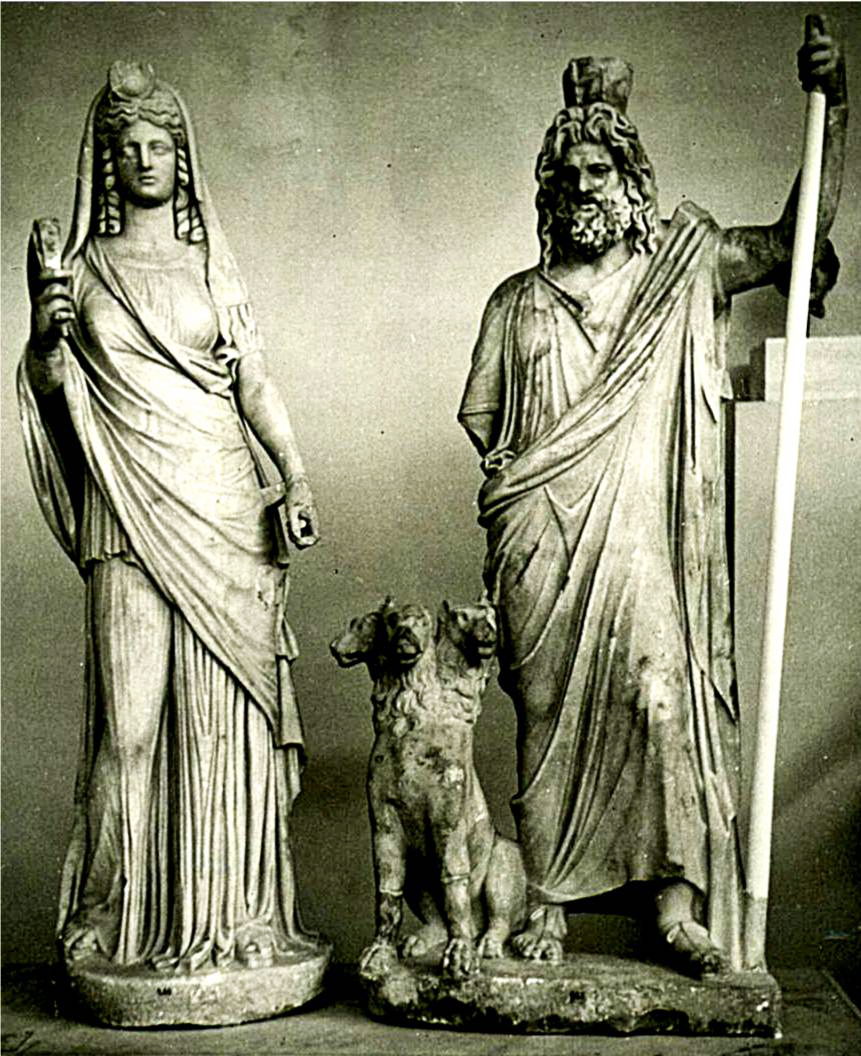  ...in his Gods of the Egyptians, depicts Serapis (Minotaur-like) with the body of a man and the head of a bull. Labyrinths were symbolic of the involvements and illusions of the lower world through which wanders the soul of man in its search for truth. In the labyrinth dwells the lower animal man with the head of the bull, who seeks to destroy the soul entangled in the maze of worldly ignorance. In this relation Serapis becomes the Tryer or Adversary who tests the souls of those seeking union with the immortals. ...in his Gods of the Egyptians, depicts Serapis (Minotaur-like) with the body of a man and the head of a bull. Labyrinths were symbolic of the involvements and illusions of the lower world through which wanders the soul of man in its search for truth. In the labyrinth dwells the lower animal man with the head of the bull, who seeks to destroy the soul entangled in the maze of worldly ignorance. In this relation Serapis becomes the Tryer or Adversary who tests the souls of those seeking union with the immortals.Well, well... now, that's interesting, don't you think? The 'Tryer'... or 'Adversary'... Now, where do you suppose we've heard that before? Except that, here, this 'Adversary' serves the Higher purpose of 'trial'... or 'initiation' into the state of immortality... And, I believe that we can see this same 'Tryer' at work in the book of Job, where he is referred to by another name... Is anybody else beginning to see the Light...?  Let's take one more 'edit' on this one, so that I can add one or two more things while we're 'batting a thousand'... Serapis... Several unsatisfactory attempts have been made to etymologize the word Serapis. Godfrey Higgins notes that Soros was the name given by the Egyptians to a stone coffin, And Apis was Osiris incarnate in the sacred bull. These two words combined result in Soros-Apis or Sor-Apis, 'the tomb of the bull.' But it is improbable that the Egyptians would worship a coffin in the shape of a man.
Several ancient authors, including Macrobius, have affirmed that Serapis was a name for the Sun, because his image so often had a halo of light about its head. In his Oration Upon the Sun, Julian speaks of the deity in these words: "One Jove, one Pluto, one Sun is Serapis." In Hebrew, Serapis is Saraph, meaning 'to blaze out' or 'to blaze up.' For this reason, the Jews designated one of their hierarchies of spiritual beings, Seraphim.
Do you see what I see...? Seraphim... and an Ark... and a stone coffin, maybe, from which the Sun will again 'blaze up, and out'... The Sun was buried... in 'Pluto,' say... Hades... as was the Ark; Jeremiah hid it in a mountain... a real stone coffin, wouldn't you say? Perfect timing...  |
|
|
|
Post by Goldenfleeced on Jan 12, 2015 16:41:04 GMT
Another edit, since I really wanted to take advantage of the post number today... I still have a little bit of time...  In regard to the issue of 'Who Are You?'... it is an item of special importance, I think, to pay attention to the name; names give things their 'definition.' And so, we are told that: Serapis was called 'Theon Heptagrammaton,' or the god with the name of seven letters. The name Serapis (like Abraxas and Mithras) contains seven letters. In their hymns to Serapis the priests chanted the seven vowels.
Now, you see that the Caterpillar 'chants the vowels,' yes...? Interestingly, the connection with Alice and her adventures underground are strengthened rather significantly by the fact that Serapis was pronounced by two Egyptian initiates, the Eumolpid Timotheus and Manetho the Sebenite, to be equipollent to Pluto. This, it was said, was a masterly stroke, for in Serapis the Greeks and Egyptians found a deity in common, and thus religious unity was consummated between the two nations.I believe that Serapis actually forms the basis for religious unity between many nations... including the Jews... since I can think of another 'name of seven letters' that they refer to by 'another name'... The Theon 'Tetragrammaton'... or god with a name of four letters... which, if we add the vowels as do the Greeks and Egyptians, we actually have a 'name of seven letters'... There's really no way around that one...  While it is most likely by now that, if you are still reading, you are trying to count the number of letters in the word 'crazy' (lol), I have further substantiation for the identification of the Egyptian Serapis with the Jewish Jehovah... remember the long, flowing locks of hair? Now, remember the description that is given us in the Commentary on the Sefer Yetzirah... ...One of the most significant interpretations is that of the Bahir. The Bahir states: "What is the Teli? It is the likeness before the Blessed Holy One. It is thus written, 'His locks are hanging (taltalim)' (Song of Songs 5:11).
The link with this biblical verse is highly significant. In its entirety, the verse reads, "His head is a treasure of fine gold. His locks are hanging, black like a raven."
In both Talmudic and Kabbalistic traditions, this verse has two interpretations. First, it relates to a vision of God, indicating that when He is visualized in battle, He is seen as a young man with black hair. The Kabbalists say that this is Zer Anpin (Small Face, Microprosopus), the personification of the six Sefirot from Chesed to Yesod.
The second interpretation relates this verse to the Torah. The Talmud states that the hanging (or piled) hair relates to the fact that every letter of Torah contains "piles and piles" (teli tela'im) of wisdom. Besides this, the hanging hairs are said to relate to the lines upon which the Torah are written.
The Torah which is spoken of here is not the ordinary written Torah, but the primeval Torah, which was written "with black fire on white fire." According to many Kabbalists, this primeval Torah in itself is identified with Zer Anpin.And, I told you about 'reading between the lines,' didn't I...? It all has to do with the 'hair,' you see... which acts as 'channels,' if you Will, for the 'transmission' of this 'knowledge' from the Crown, or Head, to the 'body' beneath it. And the 'Teli' (pole) serpent... which is shown wrapped around the legs of Serapis... 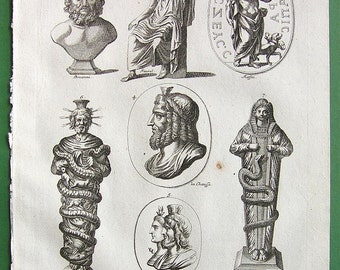   Serapis with Isis... two 'serpents'... and when the two 'serpents' are combined, of course, we have this...  Two serpents around central pole with the wings of the Seraphim...  And here... serpents, wings of Seraphim, and the addition of the seven-rayed Crown... also said to be worn by Serapis...  These spirals that graced a second-century Serapion (for the Egyptian worship of Serapis) look very much like... curling locks of hair... don't you think? So, you see... I can make the 'connections'... AC... and DC... ... or BC and AD... whatever...  Oh, and Captain 'John,' is it...? Welcome aboard. Let me introduce you to 'Captain Dave,' and 'Captain Hook'... there's no more 'Captain and Tenille,' but I'm sure you won't mind that too much... I think you already know 'Captain Kangaroo'... And don't mind me... I'm just the Dancing Bear...  |
|
|
|
Post by Goldenfleeced on Jan 13, 2015 8:27:10 GMT
You know, I think it's probably a good thing that those radio 'friends' of mine are only imaginary... Some of them are kind of weird...  Like I need fluorescent lighting in an outhouse... A small space heater would be nice, though... You guys really aren't much for 'builders,' are you? Well, let's continue on with this 1013th post, on this date of 1/13, by taking note of these additional facts regarding 'Serapis;' I think that you can begin to appreciate the True 'depth' of the 'Mystery,' and the possible reasons for having 're-veiled' this particular Mystery... It has everything to do with the Past, the Present... and the Future. Serapis is often shown standing on the back of the sacred crocodile, carrying in his left hand a rule with which to measure the inundation of the Nile, and balancing with his right hand a curious emblem consisting of an animal with three heads. The first head -- that of a lion -- signified the present; the second head -- that of a wolf -- the past; and the third head -- that of a dog -- the future. The body with its three heads was enveloped by the twisted coils of a serpent. Figures of Serapis are occasionally accompanied by Cerberus, the three-headed dog of Pluto, and -- like Jupiter -- carry baskets of grain upon their heads.Notice the sacred crocodile from which the 'oil of anointing' is derived... the 'messah'... and its likeness to the word 'messiah' has been remarked on previously; now notice Pluto (the ruler of 'Hell'), and Jupiter (our Ram-headed god, Ammon), and the 'baskets of grain' or 'sheaves of wheat' that are shown in the Hoover Dam Memorial at the figure's 'head'... Let's go on... Two quotations will further establish the relationship existing between the Mysteries of Serapis and those of other ancient peoples. The first is from Richard Payne Knight's Symbolical Language of Ancient Art and Mythology: "Hence Varro (in De Lingua Latina) says that Coelum and Terra, that is universal mind and productive body, are the Great Gods of the Samothracian Mysteries; and the same as the Serapis and Isis of the later Egyptians; the Taautos and Astarte of the Phoenicians, and the Saturn and Ops of the Latins." The second quotation is from Albert Pike's "Morals and Dogma:" "Thee, says Martianus Capella, in his hymn to the Sun, 'dwellers on the Nile adore as Serapis, and Memphis worships as Osiris: in the sacred rites of Persia thou art Mithras, in Phrygia, Atys, and Libya bows down to thee as Ammon, and Phoenician Byblos as Adonis; thus the whole world adores thee under different names.' "Oh, yes... Before Abraham was, I am...Is... Was... and Will Be... Past... present... and future. Now, let me add one more thing, and I think that you can begin to 'add things up' for yourselves, if you care to; here, I present a clear-cut case of 'tampering with the evidence,' and ask that you give it due consideration... When the Christian soldiers, in obedience to this order, entered the Serapeum at Alexandria to destroy the image of Serapis which had stood there for centuries, so great was their veneration for the god that they dared not touch the image lest the ground should open at their feet and engulf them. At length, overcoming their fear, they demolished the statue, sacked the building, and finally as a fitting climax to their offense, burned the magnificent library which was housed within the lofty apartments of the Serapeum.
Several writers have recorded the remarkable fact that Christian symbols were found in the ruined foundations of this pagan temple (the Serapeum). Socrates, a church historian of the fifth century, declared that after the pious Christians had razed the Serapeum at Alexandria and scattered the demons that dwelt there under the guise of gods, beneath the foundations was found the monogram of Christ!So, do you see what I mean when I say... "the joke's on you?" I see a light beginning to shine... And hay... I like this one, too...  As well as the 'preview' for "The Adventures of Puss in Boots," wherein, evidently, 'secrets will be revealed'... Well, I'll be darned... |
|
|
|
Post by Goldenfleeced on Jan 17, 2015 22:58:20 GMT
Now, this being the 17th day of January, I thought it would be a 'good' time to continue our discussion of the 'Mysteries' with... another mystery. Or two. To begin with, I told you previously that I would try to explain the 'importance' of this date to the 'mystery' of Rennes-le-Chateau, beginning with this piece of information: 17th January 681 was the date Sigisbert IV was reputed to have arrived at Rennes-le-Château. He is the mysterious link in the Merovingian line who, as son of Dagobert II, would have been his heir and pretender to the throne of FranceNow, let's take a quote from the research done on what are known as the 'Odinic Mysteries' by Manly Hall, in his work "The Secret Teachings of All Ages"... The date of the founding of the Odinic Mysteries is uncertain, some writers declaring that they were established in the first century before Christ; others, the first century after Christ. Robert Macoy, 33 degree, gives the following description of their origin: "It appears from the northern chronicles that in the first century of the Christian Era, Sigge, the chief of the Aser, an Asiatic tribe, emigrated from the Caspian Sea and the Caucasus into northern Europe. He directed his course northwesterly from the Black Sea to Russia, over which, according to tradition, he placed one of his sons as a ruler, as he is said to have done over the Saxons and the Franks. He then advanced through Cimbria to Denmark, which acknowledged his fifth son Skiold as its sovereign, and passed over to Sweden, where Gwylf, who did homage to the wonderful stranger, and was initiated into his mysteries, then ruled.
He soon made himself master here, built Sigtuna as the capital of his empire, and promulgated a new code of laws, and established the sacred mysteries. He, himself, assumed the name of Odin, founded the priesthood of the twelve Drottars who conducted the secret worship, the administration of justice, and, as prophets, revealed the future. The secret rites of these mysteries celebrated the death of Balder, the beautiful and lovely, and represented the grief of Gods and men at his death, and his restoration to life." (General History of Freemasonry)Notice the name of the 'mysterious stranger' that came from the Caspian 'sea' and became known as 'Odin'... it was Sigge... which bears a great resemblance to the name Sigisbert (also written as Sigebert), if you ask me. And then, there were the areas over which his sons were placed as rulers... the land of the 'Franks' most notably... Frank, member of a Germanic-speaking people who invaded the western Roman Empire in the 5th century. Dominating present-day northern France, Belgium, and western Germany, the Franks established the most powerful Christian kingdom of early medieval western Europe.- from the Encyclopedia Britannica The Salian Franks formed a kingdom on Roman-held soil between the Rhine, Scheldt, and Meuse rivers in what is now Belgium and the Netherlands. The kingdom was acknowledged by the Romans after 357 AD. Following the collapse of Rome in the West, the Frankish tribes were united under the Merovingians, who succeeded in conquering most of Gaul in the 6th century. The Franks became very powerful after this. The Merovingian dynasty, descendants of the Salians, founded one of the Germanic monarchies that replaced the Western Roman Empire. The Frankish state consolidated its hold over large parts of western Europe by the end of the eighth century, developing into the Carolingian Empire. This empire would gradually evolve into the state of France and the Holy Roman Empire.en.wikipedia.org/wiki/FranksSo... about that 'Pope Frank' thing... Tut, tut... Oh, yes... Sigge was from Aser... which would make him more or less... an 'Aser' of Spades... lolol... This just keeps getting better, don't you think?  Now, the 'central theme' of these 'mysteries' is a 'death'... and a subsequent 'return,' or 'resurrection,' if you Will... as is stated, the Odinic Mysteries center on the death of Balder... god of Light, and Purity, known as the 'beautiful' (and that reminds me of somebody else, come to think of it)... the 'son' of 'Odin,'- the great Master that established this 'kingdom' in the north... In continental Saxon and Anglo-Saxon tradition, the son of Woden is called not Bealdor but Baldag (Sax.) and Bældæg, Beldeg (AS.), which shows association with "day", possibly with Day personified as a deity which, Grimm points out, would agree with the meaning "shining one, white one, a god" derived from the meaning of Baltic baltas, further adducing Slavic Belobog and German Berhta.en.wikipedia.org/wiki/BaldrHmmmmm... In the Poetic Edda the tale of Baldr's death is referred to rather than recounted at length. Among the visions which the Völva sees and describes in the prophecy known as the Völuspá is one of the fatal mistletoe, the birth of Váli and the weeping of Frigg (stanzas 31-33). Yet looking far into the future the Völva sees a brighter vision of a new world, when both Höðr and Baldr will come back (stanza 62). The Eddic poem Baldr's Dreams mentions that Baldr has bad dreams which the gods then discuss. Odin rides to Hel and awakens a seeress, who tells him Höðr will kill Baldr but Vali will avenge him (stanzas 9, 11).
"The second son of Odin is Baldur, and good things are to be said of him. He is best, and all praise him; he is so fair of feature, and so bright, that light shines from him. A certain herb is so white that it is likened to Baldr's brow; of all grasses it is whitest, and by it thou mayest judge his fairness, both in hair and in body. He is the wisest of the Æsir, and the fairest-spoken and most gracious; and that quality attends him, that none may gainsay his judgments. He dwells in the place called Breidablik, which is in heaven; in that place may nothing unclean be[.] — Brodeur's translation, GlyfaginningNow, Balder was said to have been killed by a mistletoe 'dart' or 'arrow'(spear)... by an envious 'brother,' Loki... compare this with the death of Dagobert II, recounted here: Dagobert II was a French king from the sacred Merovingian bloodline, the last Merovingian to hold the title "Holy Roman Emperor". The Merovingians were a dynasty of Frankish priest-kings who were believed by their subjects to have magical powers derived from their long red hair. There were rumors of witchcraft, fortune telling and crystal-ball gazing, among others. In fact, portraits of Merovingian kings customarily depict them holding one of these crystal balls in the left hand. Since the time of Clovis I, the Merovingians had presided over the Holy Roman Empire, but by the time Dagobert II was born, the power of the throne had already been weakened, with authority increasingly being usurped by court chancellors known as "Mayors of the Palace".
On the death of his father, the 5-year-old Dagobert was kidnapped by then Palace Mayor Grimoald, who tried to put his own son on the throne. Human compassion saved him from death, and he was exiled to Ireland, only to return years later and reclaim the throne in 679. But the problems of the Mayors of the Palace continued. Three years later, apparently displeased with Dagobert’s lack of allegiance, the Roman church entered into a conspiracy with Mayor Pepin the Fat. On December 23, while on a hunting trip, Dagobert was lanced through the eye by his own godson, supposedly on Pepin’s orders. With Roman endorsement, Pepin passed political power onto his son, Charles Martel, thus starting the Carolingian dynasty that would later become so famous. After that, the Merovingian bloodline faded into obscurity. www.bibliotecapleyades.net/merovingians/merovingios_09.htmNow, the really interesting part of the Balder story is this... His death is seen as the first in the chain of events which will ultimately lead to the destruction of the gods at Ragnarök. Baldr will be reborn in the new world, according to Völuspá.And Ragnarok, of course, is something like... Armageddon. For those of you that prefer the 'Christ-ian Mysteries'...  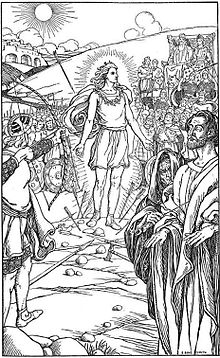 And then... as to the 17th day of January... there is this: 17th January 872 the lost body of Dagobert II was supposedly rediscoveredIn other words, the 17th day of January was a Good Day for a 'return'... and, if you add the numbers of the year, 8+7+2, you get something really serendipitous... another 17... which reduces to 8, the number of Messiah... and, just to make things really 'fun,' if you put those two 17's together, to make 1717, that is the year that Speculative Freemasonry 'built' its first Grand Lodge in London... on June (6) 24 (12 +12... just like our Xmas post)...  Just sayin'... And that makes something like 'The Return of the King,' and hay... if I put that 1717 to Good use, and make two 8's out of it... I've got myself that Delta 88 I was telling you about... It's a 'Royale'... lolol...  ...but not a 'Royale Flush,' sadly... I'll bet we can take that 'Aser' of 'Spades,' though, and work on a pretty Fair 'BlackJack'... Since the word 'Aser' (the tribe from which 'Odin' originated), looks an awful lot like the name 'Serapis,' when you look at it... and I have a Good feeling that it's all connected, from the beginning... and will 'connect' again, before we reach... Ragnarok...  Oh, and one more thing... I promise... okay... two more things... I think... Did you realize that the numbers of this year of 2015, when added (2+15), equal... 17? Well, I'll be darned... they do. And, about that 'mistletoe dart' or 'spear'... and the 'kiss' under the 'mistletoe'... you can all see, in retrospect, can't you, that it was a subtle nod to the cunning of the 'trickster' that prompted the use of the mistletoe at Xmas time... and that it is the 'Judas kiss' that is given under the mistletoe...? The kiss of betrayal... the 'reason for the season,' though, after all... You've got to love the 'serendipity,' if not the Story... Me? I just can't help believing that... it's a Wonderful world...  Hey, 'Cheetah'... how about this? Pope 'Frank' the Golden Fleeced... Baaaaahahahaha... Just kidding, of course... I don't see any shoes...  Oh, and... while we're 'add' it... 1/17, when added, makes... 9... A complete cycle. I couldn't resist... 'High Way Star'... complete... lolol... And... how does this fit in now? Aser... in Asia... "Five golden tooooooooooes..." Lolol... |
|
|
|
Post by Goldenfleeced on Jan 29, 2015 10:11:31 GMT
Well, I know it's early... very early... and I should be asleep; maybe I can, once I get this post in... I couldn't sleep, because I was feeling kind of sorry for myself, and wondering why I am where I am, and why... (always 'why?')... and decided to take in a word or two, and this is what I found. It must have been a 'tap on the shoulder'... I had said the words 'ugly duckling' to myself, and then I remembered that it grew up, eventually, to become... a swan. And then, it knew why it wasn't like the rest of the 'ducks.'- because it really wasn't. It walked like a duck, and swam like a duck... but... there was something 'wrong' with it. Or not... According to Manly Hall, the Mysteries of Orpheus (there was a historical and a mythological character by this name, by the way) relate that Orpheus incarnates as a white swan... the swan representing the spiritual truths that he Is. Hall goes on to say that the " swan is the symbol of the Initiates of the Mysteries. It is a symbol also of the divine power which is the progenitor of the world." So, the 'ugly duckling' that had no idea where it was headed in life, should realize by now that it is only the beginning of a very Great Real-ization... And about that 'black swan'...  ...and the 'Swan Princess'... You see, Orpheus, for those of you that don't know, delivers the Great Wisdom of the Ages through Music, for the 'salvation' of Mankind from the 'serpent of false knowledge'... which serpent may be seen as our 'Apep,' which is disposed of in another 'story' by the 'Master Cat,' the Mau of the Egyptians (which sounds very much like Queen Moo... but that's a horse of another color... lol...) It is said that Orpheus was torn to pieces by the Ciconian women, which symbolize the various contending religions, or systems of religion, which destroy the body of Truth. Do you see how all of these stories come together, finally...? Once again... I just think it's all pretty Wonderful... And... Go, Ducks...  Oh, and here's another 'mystery' that we can solve, since it's 'related' to Orpheus... Do you know why angels play harps? Seems kind of foolish, doesn't it...? Orpheus played the lyre... a harp. It is written that the musical instruments were the invention of Tubal-Cain... that's True. So, our 'historical' Orpheus, as the possessor, and Master, I might add, of the musical lyre, must have been related to who...? By the rivers of Babylon, There we sat down and wept, When we remembered Zion. 2 Upon the willows in the midst of it We hung our harps...Psalm 137:1 (1+3+7=11... 11-1...) Post 1073... 11... 'Real' Tenacious D... lolol... Can I tell you something about those 'fastidious' women that hose off their sidewalks and driveways every morning? This is going to take some of the 'mystery' out of that, too, but... here's how it is... Those poor, dear women have labored at keeping a decently clean home for years, mostly without the benefit of a vacuum cleaner, and many people coming and going; the first thing that they figured out to do in the morning is to go get rid of everything near the house that might find its way in, and have to be 'cleaned out' again later on... they have enough to do. Traditionally, there would be chickens and other animals in the yard... ahem... and no 'dust-buster,' but them...  It's called 'working smarter,' instead of 'working harder,' and believe me... it's a very old concept...  |
|
|
|
Post by Valentin on Oct 15, 2020 2:19:56 GMT
Hi there, I enjoy reading all of your article. I wanted to write a little comment to support you. www.uri365.net/ |
|
|
|
Post by IsacKEF on Jan 24, 2022 21:57:54 GMT
|
|








